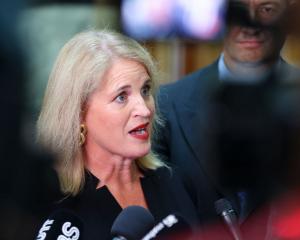Australian-owned banks are the winners as more than 200,000 KiwiSavers who have invested in default funds miss out on an estimated $1 billion over the past six years.
A group of independent financial advisers, who have no involvement with KiwiSaver funds, yesterday called for immediate and substantial changes in the way default KiwiSaver funds operate.
Spokesman John Cliffe, from Cliffe Consulting, said New Zealanders in the default funds had overpaid an estimated $70million in tax, which was included in the $1billion.
Meanwhile, $1.5billion of their funds was invested in securities issued by Australian-owned banks and insurance companies.
The group wants changes.
``The problems with default KiwiSaver funds are systemic and long-standing. They are well understood, yet little of real substance has been done to resolve them by those involved, including banks and insurance companies, the Financial Markets Authority, the Reserve Bank or successive governments.''
Using publicly available data, the group had, for the first time, quantified how default KiwiSavers were missing out, Mr Cliffe said.
Default KiwiSaver funds totalled about $4.6billion, and about $1.5billion of it was invested in cash or short-term bonds.
The three main issues that had contributed to the default members missing out were: the inappropriate conservative default fund-type setting; the failure of default fund managers to switch default members out to better funds at an appropriate rate; and over-taxation of a large number of New Zealanders in the default funds.
Mr Cliffe said there were three basic types of investment funds: conservative, balanced and growth.
KiwiSaver assets were designed for retirement funding, specifically retirement income maximisation, a long-term purpose where a balanced (or growth) investment strategy was much more appropriate.
``A conservative strategy is generally incompatible with the overall purpose of KiwiSaver, so it effectively penalises long-term investors. Yet the default funds are all conservative.''
The problem had been evident almost from the start of KiwiSaver, he said.
However, when new contracts for default suppliers were let in 2014, the conservative default fund model was retained.
The decision to keep default funds conservative rather than balanced had resulted in default members missing out on about $830million over the six years ended March 31, 2018, or about $2.7million a week.
Default funds were designed as a ``temporary holding place'' for new KiwiSavers from which they could be switched to a more appropriate fund, Mr Cliffe said. But for many savers, the switch had never taken place. Default fund managers had performed poorly in that regard.
During the past six years, about 460,000 KiwiSavers had switched out of default funds. Numbers in default schemes had only marginally reduced, as new members offset those switching out.
In 2012, there were 447,274 members in default schemes. At March 31, 2017, at least 444,486 KiwiSavers were in default funds. And the value of assets in default funds grew from $2.92billion in 2012 to $4.6billion in 2017.
Many of the lowest-income-earning KiwiSaver members were paying tax at the highest possible rate of 28%, when they should have been taxed at 10.5% or 17.5%.
Inland Revenue supplied default KiwiSaver funds with default member account details but not the member's tax rate. Unless a fund successfully contacted members and obtained their tax rate, it had to deduct tax at 28%, the maximum rate.
``This problem is likely to have affected the majority of those who have been enrolled in a default KiwiSaver fund. For six years ended 2018, this amounts to an estimated $70million of excess tax.
``As this portfolio investment entity ([PIE] tax is a final tax, any overpayment is unrecoverable.''
The real winners had been Australian-owned banks, which had been able to invest the default funds in their own and each other's securities, Mr Cliffe said.
As at March 2018, that amounted to 31% of the ASB's default fund, 30% of ANZ's, 31% of BNZ's, 27% of Westpac's and 34% of AMP's.
If a balanced fund option for default funds was implemented, the exposure to Australian-owned bank securities would decrease by about $1billion.
The banks charged KiwiSaver members management fees for investing their funds in that way, he said.
The FMA, government ministers and others responsible for overseeing KiwiSaver had frequently asserted better financial literacy education of default investors was required, along with better fund manager performance in switching out default members.
``After a decade of failure with this approach, it is time to take action.''
Changes needed
• Change all the default fund options to balanced, not conservative fund types.
• Ensure IRD provides default fund managers with correct member tax rates for all default members.
• Progressively remove all members still in a default fund after 12 months by switching them out.
• Establish a white-labelled government balanced fund into which all longer-term default members are switched.
• Stop new default member flows to any default fund provider that does not adequately meet specified engagement and switch-out rates for default members.
• Instruct the white-labelled government balanced fund to minimise investments in Australian-owned bank securities.
• Require default fund providers to keep default KiwiSaver funds separate from other funds, to not use the word ‘‘default’’ in the name of any other fund they operate and to switch ‘‘active choice’’ members out of their default fund.
• Investigate KiwiSaver fund managers that have significant conflicts of interest in security selection or in the way they determine what fund types to recommend to members.
• Require default fund managers to refund management fees charged in relation to placing and keeping investments in their own issued securities.
• Require explicit identification and ongoing disclosure of such conflicts to fund members.












